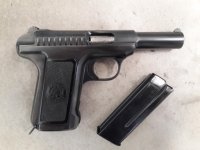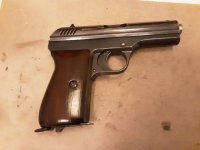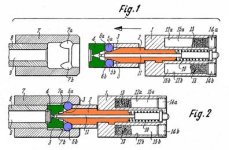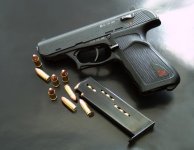The 1911 and the Glock use the Browning form of delayed blowback.
The Strike One uses the Bergmann system with a sliding locking block.
The Walther P38 and its Beretta progeny use a swiveling locking block.
The Grand Power, Beretta Cougar and other weapons use a rotating barrel as part of the locking/blowback delay system.
The Luger uses a weird thing called a toggle lock. It seems to work, but I've never quite got my head around it.
Then there is the roller delay system, another mechanical dark art.

All the above are considered locked breech systems where the slide and barrel are mechanically locked together for a period, hopefully long enough to allow the pressures to reduce to a sensible level.
Then there are gas delayed blowback systems that use pressure form the fired round to delay or drastically slow down the opening of the action.
The HK P7 and the Walther "Soft-Coil" guns use a chamber with a piston attached to the slide.
The Steyr GB uses a chamber formed by the slide and a structure on the barrel.
Hope this helps.








